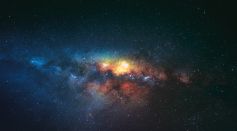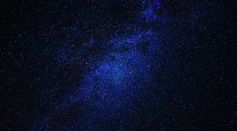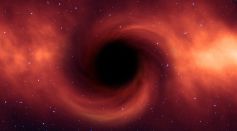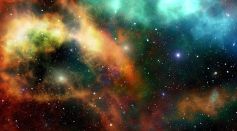Tags: Dark Energy
Emergent ‘Unparticles’ Dark Energy Could Be Driving Force Behind Expansion of the Universe, Study Suggests
Future Circular Collider: Next-Generation Particle Accelerator to Study the Dark Particles in the Universe
ESA’s Euclid Space Telescope Releases First Images, Marks Beginning of Quest for Dark Energy
What’s Next for ESA’s Euclid Space Telescope After ‘Fantastic Launch’?

European Space Agency To Investigate Dark Energy and Dark Matter With Euclid Space Telescope
ESA's Euclid Space Telescope Set To Launch This Week To Hunt for Clues of the Universe's Greatest Mysteries
ESA Euclid Space Telescope With Infrared Detectors Will Look Into Dark Matter: Report
Dark Energy That Periodically Switches On, Off Could Lead To More Big Bangs

Second, Third Big Bang? Dark Energy Could Be Causing the Universe To Expand Faster

70% of ‘Missing’ Universe Finally Found; Black Holes Could Be the Source, Scientists Say

Most Detailed 3D Map of the Universe Showcases 7.5 Million Galaxies Surveyed Using 5,000 Telescopes
Dark Energy Detected? Unexplained Finding Shows This Comprise 68% of the Universe While 27% Is Dark Matter
Largest, Most Accurate Image to Date of the Universe Mapped by Dark Energy Survey
New Research Suggests That Dark Matter Does Not Exist

Dark Distortions: Art Installation Demonstrates How Dark Matter Interacts With Light
The Dark Energy Survey Will Find Answers to an Expanding Universe or Is It Compressing to Its Former Singularity to End All Existence
New Unit BAO Reveled By Astronomers To Measure The Distances Between Galaxies And Quasars
Most Popular

Can the World Run Out of Water? Water Scarcity Science and Climate Impact Explained

Solar Maximum 2026: Inside the Sunspot Cycle and Solar Activity Forecast Astronomers Are Watching

Volcanic Warning Signs: How Magma Movement Reveals Eruption Prediction Clues for Geologists

Could Technology Prevent Natural Disasters? How Disaster Prediction and Early Warning Systems Could Save Lives




